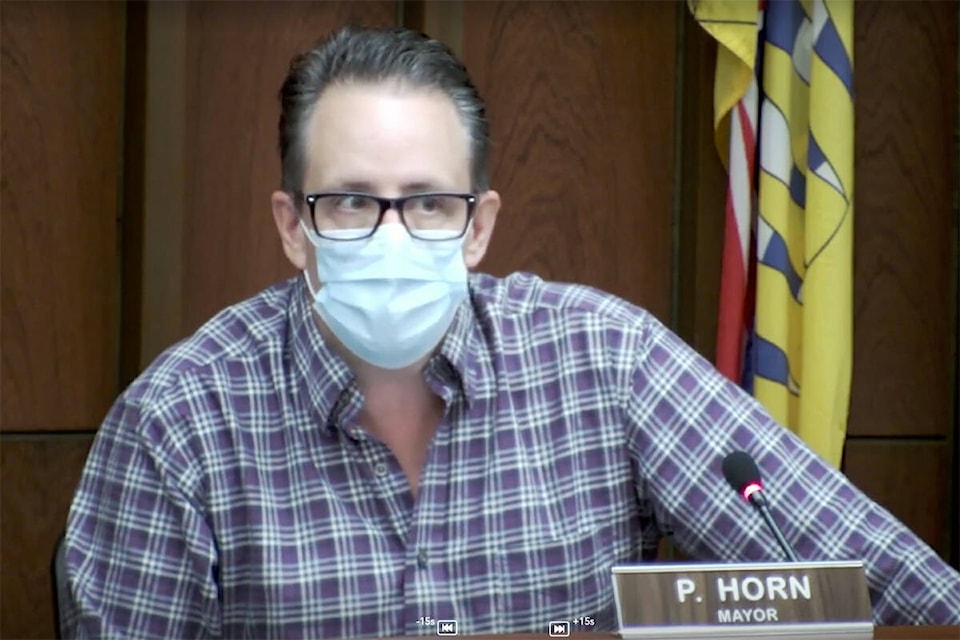Faced with a long list of unfunded capital projects, revenue shortfalls, and upcoming infrastructure projects required to handle the explosion of development in Mission, the city has some “hard decisions” to make.
Council unanimously agreed to consider additional tax increases over the next five years on Oct. 5, as well as consider long-term debt as a solution to the larger projects pushed back year after year.
“Ultimately, we need to start making some hard decisions,” said Doug Stewart, director of finance.
Staff have been reviewing a number of areas ahead of the next budget, slated to be discussed by council next month.
They’ve identified gaps regarding reserve spending for city assets, big projects with no funds to start, and a need to increase developer levies required for infrastructure growth.
The value of the city’s current capital assets are depreciating at a rate of $4.6 million a year, yet only $2.5 million a year is being transferred into reserves to maintain and replace them, according to the report.
Steward likened the situation to buying a car for $40,000 and expecting it to last for 10 years. He said every year $4,000 would need to be set aside to replace the vehicle.
For the city, this applies to every asset it owns including roads, buildings, infrastructure, equipment and more.
The problem had previously been understated because millions were supplemented annually from other sources such as Gas Tax grants and gaming revenue – both of which are no longer reliable.
Staff want council to consider an additional 0.5 per cent tax increase to the 2022 budget, and an additional one per cent increase from 2023 to 2027.
Mayor Paul Horn said it’s “somewhat disturbing” that maintenance of public property was being left to grant funding.
“We saw this with the carbon tax this year, just how fluid with the stroke of a pen that source can go away, or the way COVID affected gaming this year,” Horn said.
“Frankly, it might be an unpopular thing on the surface level, but it’s the right thing to do.”
Staff’s review also compiled a list of projects they’ve identified that do not have the funding to start.
Stewart said with the current revenue and reserve levels, financing the combined list is impossible without taking on debt.
He joked they “had a list of what year they weren’t going to do something.”
His goal is to eliminate that list this year, and prepare a realistic, fully funded five-year plan.
“If we’re not going to do a project, let’s admit it and either defer it, cancel it or figure how we’re going to pay for it,” he said. “It really is that important.”
The unfunded list over the next five years includes $5.1 million for a new Cedar Valley fire hall (originally listed in 2018), $27 million to expand and renovate the Mission RCMP building (2015), $3.2 million for a new Search and Rescue building (2019), a seismic upgrade and expansion to the public works building for $6 million (2007/2019), and $16 million for replacing municipal hall (2019).
“Think about the Cedar Valley Fire Hall … We’ve done a plan, we know where we think we might want it to go; we actually have nothing in the budget on how we’re going to pay for it,” Steward said.
While debt is often seen as a negative, Stewart said it shouldn’t be when it comes to the right assets, comparing it to when a person takes on debt to buy a home.
Staff have also been directed to prepare bylaw – developer cost charges (DCC) and community amenity contributions (CAC) – amendments to ensure developers pay their fair share.
Over the next five years, Mission needs to spend an average of $12.9 million annually on new infrastructure required for development, according to the report.
The city only brought in an average of $3.51 million from DCCs from 2018 to 2020, Stewart said in an email.
Considerable infrastructure work will be required for development in Silverdale, Cedar Valley and the Waterfront.
Staff’s basic philosophy is that money for maintaining and replacing city assets needs to come from property tax and utility revenue; developers should be paying for the infrastructure expansion needed to accommodate the growth; and long-term debt should be used for large expensive projects that will have long lifespans.
RELATED: Heated debate at Mission council over property-tax increase in 2021 budget
RELATED: City of Mission breaks ground on new pumptrack, announces 2 more park-play structures
@portmoodypigeon
patrick.penner@missioncityrecord.com
Like us on Facebook and follow us on Twitter.
